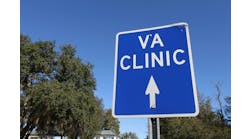The most common reason hospitals purchase locationing technology is to track assets, and the most common motive is to save $1 million or more in medical devices that are stolen, hidden or lost every year. But if that’s your only reason, you are missing the potential of many millions more in cost reduction and revenue generation.
Real-time location systems (RTLS) now enable the automation of many workflows as well as tracking patients, staff, physicians and procedures. RTLS fights the spread of infection, monitors the temperature of medicine and blood products, helps optimize procedure areas and automates discharge. It’s the key technology behind operational platforms that are increasing productivity in nearly every segment of care delivery.
Until recently, infection was considered an inevitable risk of healthcare delivery. Now that perception has changed as reimbursement guidelines penalize re-admission and infection-related length of stay. A record 2,610 hospitals are under the Centers for Medicare and Medicaid Services (CMS) penalties for readmissions currently. Last year, nearly 18 percent of Medicare patients were readmitted within 30 days at a cost of $17 billion.
RTLS fights infection in several ways. It can track the contacts an infected patient has throughout the hospital as well as equipment that may have been exposed to disease. A recent British hospital study illustrated the importance of this capability when it was determined that a hospital-acquired infection (HAI) patient came in contact with 216 different people in one day!
When time is of the essence, such as the Texas outbreak of Ebola, your institution must have the means to identify in minutes the hospital personnel who came in contact with a contagious patient.
Yet even the best infection-control precautions fail when employees are not alerted about potential exposure to infection. Right now, housekeepers, transport personnel and other staff can walk into an isolation room without knowing its status because in many hospitals infection-control nurses still manually prepare lists of isolation rooms. Those lists can be outdated before the nurses leave their office to post the warnings.
RTLS combined with automated patient flow technology helps alert those personnel to isolation status so they can better protect themselves from contagion.
Between 70,000 to 100,000 lives are lost to infection in America annually, with an attendant cost of $45 billion. A 500-bed hospital, at the current infection rate, could average 194 unnecessary deaths and $28 million in unnecessary costs per year. The contaminated hands of healthcare workers are recognized as the primary source of healthcare-associated pathogens. Decontamination using gel or soap is the simplest, most effective way to prevent the spread of infection between patients. England’s Broomfield Hospital totally eradicated methicillin-resistant Staphylococcus aureus (MRSA) in one year with meticulous hand washing, frequent garment changes for physicians, removing jewelry from caregivers, rigorous cleaning and restriction of wheelchair movement.
The most common methods for monitoring compliance are:
- Self-audits using the World Health Organization (WHO) “5 Moments for Hand Hygiene” checklists, measuring purchasing changes for soap and gel, and
- Making manual compliance observations, which are labor intensive, random, subjective and cause only temporary behavior changes by staff.
A remote hand-hygiene monitoring capability can increase compliance significantly by continually recording the handwashing practices of anyone who comes in contact with patients. RTLS-based technology helped New Cross Hospital increase hand-washing monitoring by 2,000 percent in a single month.
The New Cross effort was prompted by the federally sponsored Safe Hands program, designed to determine how RTLS can positively impact hand-washing compliance. All soaps and gels in bay areas, side rooms and on beds were fitted with memory modules to capture hand hygiene at the point of care. The integration of automated capacity management software and RTLS allows infection-prevention nurses to remotely observe and analyze hand-hygiene behaviors of ward staff. The system also matches software timing to workflow in order to give staff maximum credit for hand-hygiene events.
A week after “go live,” the hand-hygiene indicator (HHI) was switched on, giving real-time feedback, refreshed every 30 minutes, which informed the wards how they were doing. Hand-hygiene observations went from 600 manual observations per month to over 2 million remote observations.
Color coding was given to this score to show what was good, average and bad to drive changes in behavior. Notably, staff did not like being in the red or yellow (bad/average) zones, and they challenged one another to get into the green.



